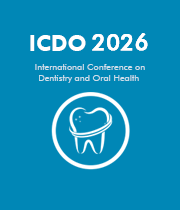Dental Erosion
Dental erosion is a leading cause of tooth decay and is primarily caused by the frequent regurgitation of acidic food, as well as beverages. This can occur due to vomiting caused by bulimia, anorexia, or pregnancy, due to the erosive effects of certain medications, which can break down the enamel of the teeth, or due to the consumption of acidic foods and beverages. Dental erosion results in the loss of the hard, protective, outer layer of the tooth (enamel) and can cause sensitivity, increased risk of cavities, and discoloration. Left untreated, dental erosion can progress and result in structural damage and eventual saponification (dissolution) of the enamel. The common factors that contribute to dental erosion are dietary (i.e. eating or drinking acidic foods and beverages). These foods and beverages include tomato products, citrus fruits, soft drinks, sports drinks, and fruit juices. Gastroesophageal reflux disease (GERD), which causes stomach acid to travel up the esophagus and enter the mouth, can also contribute to the erosion process. In addition, certain medications,such as aspirin, citric acid, and vitamin C tablets, can increase the amount of acid in the mouth and cause erosion. In order to protect against dental erosion, it is important to limit consumption of acidic food and beverages, particularly carbonated drinks and acidic fruit juices, and to use a straw when consuming acidic beverages. Brushing and flossing thoroughly with fluoride toothpaste and water immediately after ingesting acidic food or beverages is also recommended. Additionally, avoiding smoking and using of mouth rinse containing flouride is also recommended. In more advanced cases, remineralizing agents, such as special toothpastes and fluoride varnish, can help repair and protect the enamel. A dental professional can also suggest dental sealants, which create an extra barrier of protection against acids. However, in order to treat more advanced cases of erosion, such as those involving structural damage to the teeth, it is important to seek out professional advice from a dentist or dental health specialist.

David Geoffrey Gillam
Queen Mary University of London, United Kingdom
Christopher Turner
Spacemark Dental, United Kingdom




Title : Evaluating hygienist follow up for head and neck oncology patients in secondary care: Results from a two cycle audit
Peter Basta, Newcastle Dental Hospital, United Kingdom
Title : Atypical facial pain unravelled
Christopher Turner, Spacemark Dental, United Kingdom
Title : New treatment of temporomandibular disorder through muscle balance and muscle regeneration by activation of quiescent muscle stem cells( satellite cells) with mitochondrial dynamics
Ki Ji Lee, National Reserach Foundation & Busan Medical University, Korea, Republic of
Title : MRONJ and ORN: Referral or management in primary care? Navigating guidelines in the context of long waiting lists
Alisha Sagar, NHS England, United Kingdom
Title : Managing the unexpected: An Insight into supernumerary teeth
Bahar Gharooni Dowrani, Guy's and St Thomas' NHS Foundation Trust, United Kingdom
Title : Laxative prescribing for post operative head and neck cancer patients at Derriford Hospital
Pui Sze Kylie Li, Cardiff and Vale University Health Board, United Kingdom